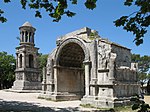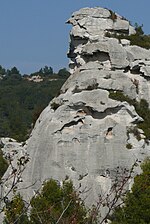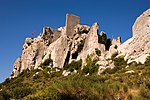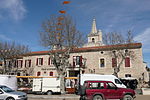Monastery of Saint-Paul de Mausole
Historic house museums in Provence-Alpes-Côte d'AzurMonuments historiques of Bouches-du-RhôneSaint-Rémy-de-ProvenceVincent van Gogh

The Monastery of Saint Paul de Mausole (French: monastère Saint-Paul-de-Mausole) is a former Roman Catholic 11th—century Benedictine monastery in Saint-Rémy-de-Provence, Provence, France. It was later administered by the Order of Saint Francis in 1605. Several rooms of the building have been converted into a museum to honor the famed Dutch artist Vincent van Gogh, who stayed there in 1889–1890 at a time when the monastery had been converted to a lunatic asylum. At this site, Gogh created his reputed Magnum Opus, later titled the “Starry Night”.
Excerpt from the Wikipedia article Monastery of Saint-Paul de Mausole (License: CC BY-SA 3.0, Authors, Images).Monastery of Saint-Paul de Mausole
Chemin des Carrières, Arles
Geographical coordinates (GPS) Address External links Nearby Places Show on map
Geographical coordinates (GPS)
| Latitude | Longitude |
|---|---|
| N 43.776668 ° | E 4.835159 ° |
Address
Prieuré de Saint-Paul-de-Mausole (ancien)
Chemin des Carrières
13210 Arles
Provence-Alpes-Côte d'Azur, France
Open on Google Maps











